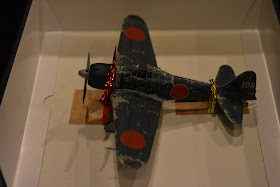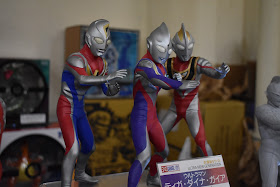Takao Okawara, Kenji Suzuki, and Yoshiaki Kondo gather to discuss Godzilla 2000. Photo by Brett Homenick.
Earlier today, I was able to view a special screening of Godzilla 2000 (1999) in 35mm. I honestly have no idea when the last time I saw the movie was. It's never been one of my favorites, but given the rare opportunity to see this film (as well as a chance to mingle with the guests), it was a chance I couldn't pass up.
Takao Okawara. Photo by Brett Homenick.
Takao Okawara began his career as an assistant director on Submersion of Japan (1973), Akira Kurosawa's Kagemusha (1980), and Godzilla 1985 (1984). After becoming a director at Toho, Okawara-san helmed the SFX productions of Godzilla vs. Mothra (1992), Godzilla vs. Mechagodzilla II (1993), Orochi the Eight-Headed Dragon (1994), Godzilla vs. Destoroyah (1995), and Godzilla 2000.
Kenji Suzuki. Photo by Brett Homenick.
Before joining Toho, Kenji Suzuki was a freelance SFX director who did some work at Tsuburaya Productions, most notably Ultraman 80 (1980-81). At Toho, he served as an assistant SFX director on The Imperial Navy (1981) and Sayonara Jupiter (1984). On Godzilla vs. King Ghidorah (1991), Godzilla vs. Mothra, Godzilla vs. Mechagodzilla II, Orochi the Eight-Headed Dragon, Godzilla vs. Space Godzilla (1994), Godzilla vs. Destoroyah (1995), Mothra (1996), and Mothra 2 (1997), he served as the chief assistant SFX director under Koichi Kawakita. On Mothra 3 (1998), Godzilla 2000, and Godzilla vs. Megaguirus (2000), he was the SFX director. In the 2000s, Suzuki-san returned to Tsuburaya Productions and lent his talents to various Ultra-projects.
With Yoshiaki Kondo.
Yoshiaki Kondo worked as an assistant director on Godzilla vs. King Ghidorah, Godzilla vs. Mothra, Godzilla vs. Mechagodzilla II, Orochi the Eight-Headed Dragon, Godzilla vs. Space Godzilla, Godzilla vs. Destoroyah, Mothra (1996), and Godzilla 2000.
Ultimately, my view on the film hasn't changed much at all. I still think it feels like leftovers from the Heisei series, the film gets completely bogged down by about the halfway point, Orga is a boring enemy for Godzilla, and the SFX don't hold up particularly well.
While I have more than my share of issues with Godzilla vs. Megaguirus (2000), one thing I can appreciate about that movie is that it gives the Millennium series its own identity. Godzilla 2000 didn't quite seem to know how to break away from the previous era.
While I may not be the movie's biggest fan, I had one heck of a good time tonight. I really enjoyed everything about the day. Even though I was wiped out by the end, it was tremendous fun, and the guests couldn't have been friendlier. Let's do it again!






















































